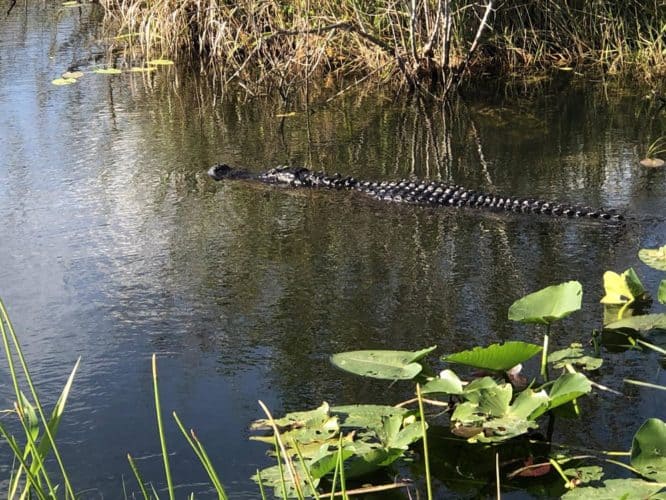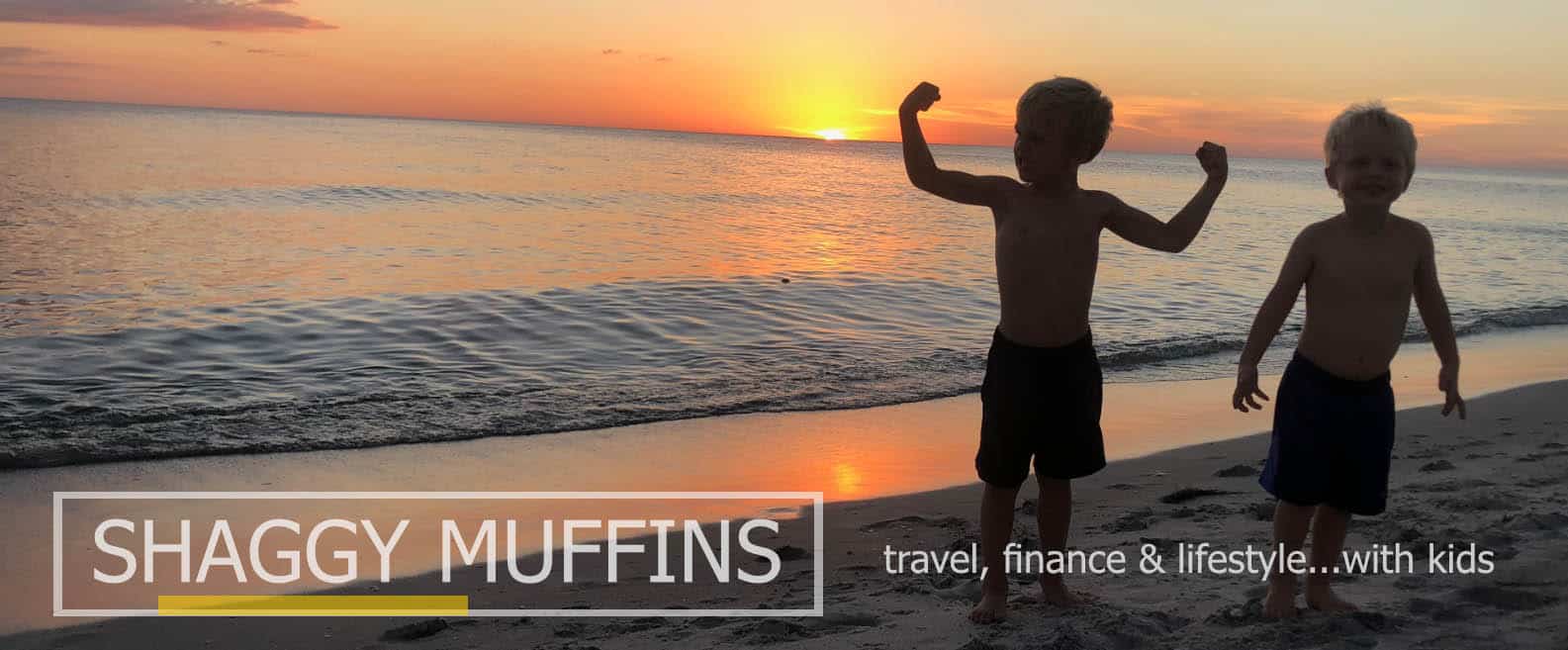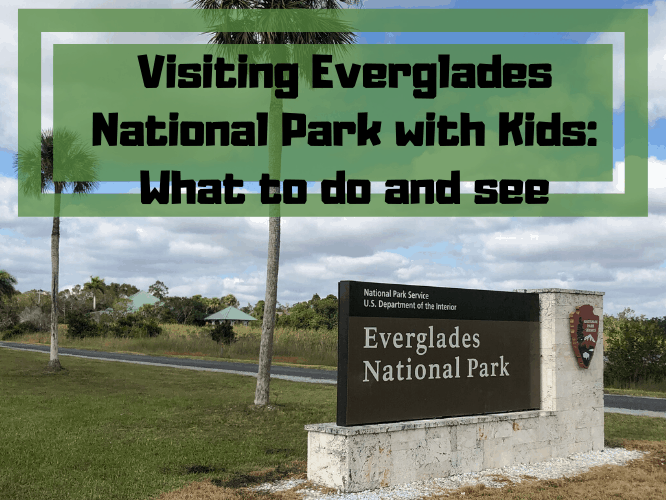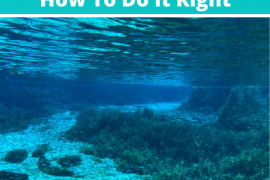
So you are thinking of taking the family to the Everglades? This article will give you a good idea of some places to go, things to do and animals you will see. If you have limited time, get a heads-up before you go so you are sure to see all the good stuff! I will cover some excellent trails to explore, where to kayak, lodging, prices, options for activities and of course…the animals!
As a quick reference, here are some of the basics:
| Entry Fee | $35/car |
| Best Times to Visit | November thru April |
| Lodging Options | RV spots | House boat rental | Tent Camping | Chickee | Eco-tent |
| Activities | Fishing | Hiking | Boat Tours | Kayaking | Birding |
| Animals to See | Birds (lots!) | Alligators | Crocodiles |
| Manatees | Dolphins | Snakes |

If you’ve always wanted to go to the Everglades but wasn’t sure what to do or where to stay? No problem, read on for a good dose of Everglades basics. Now, you may have a preconceived notion that the Everglades is just a big swamp.
I can tell you that the Everglades is much more than just a swamp. Oh, there’s so many different faces to it. There are hardwood ecosystems (called hardwood hammocks), coastal lowlands, pinelands, marl prairies, mangroves, freshwater sloughs and yes, swamps.

So, how do you get there? Well, that will depend on what part of the Everglades you want to visit. There are four visitor centers spread throughout the park. In this article, I talk about the southernmost part of the park at Flamingo on Florida Bay. State Highway 9336 will take you to the entrance.
The fee is $35/car but its good for a week. Once you’re in and start driving south you will see signs pointing to different trails and other sights to see. With over 20 trails in the Everglades, we certainly didn’t do them all on our trip but some of the ones we did explore were the Mahogany Trail, the Anhinga pond trail and Gumbo Limbo trail.
The Mahogany Hammock Trail is a stand of mahogany trees and other tree species essentially surrounded by a shallow river of grass. It’s a fairly short (15 or 20 minute) stroll through the forest on an elevated boardwalk. We were there in late November so there was not a single biting insect to be seen.

That doesn’t mean we didn’t find some biting insects in other parts of the Everglades! The Anhinga Trail (another trail we did) is totally worth it and a must-see. It’s a an elevated boardwalk through the marsh and it takes you around a crystal clear pond ecosystem full of turtles, fish, frogs, and yes, gators.

There are two trails at the Royal Palm Visitor’s Center. One is the Anhinga Trail and the other is called Gumbo Limbo trail. This is an excellent, short walk through the forest with lots of really big trees and tons of diversity to see.

We ended up camping at a tent spot very close to Florida Bay. We definitely found a good number of no-see-um and mosquitoes in this area but overall this camping area was laid out well with plenty of trees and nearby bathrooms complete with showers.

We were there in November but for trip planning purposes, November through April will be best in terms of being less rainy, less buggy and not too hot.
So what is there to do in the Everglades National Park?
When you take the main park road all the way down to the marina and main visitor center in Flamingo you will be able to explore your options for lodging and activities. Here are some of the things you can get into at the park:
pontoon boat tour: a guide will talk about the animals and ecosystems on this 90 min. boat ride. Cost: $40/adults, $20/kids
kayaking: rent a kayak or bring your own. Launch it right there at the boat ramp and you’re off. You can venture into the bay (like we did) or head upstream into the more serene freshwater areas.

fishing: hire a fishing guide and go find some action or bring your own equipment and go after some of the over 300 species of freshwater and saltwater fish in the Everglades.
hiking: with over 20 trails in the Everglades you are sure to find plenty of adventure
What about lodging? Where to stay in the Everglades
So you have decided on what to do during your visit but what about options for places to sleep? There are several options to choose from. Here’s a list:
RV spots: at the campground we stayed there we spots for RVs and campers. But maybe you would rather stay in a house…a house boat!
House boat rentals: yes, you can rent a house boat as a lodging option at the park. Its docked right there at the marina, close to the store where you can get some basic supplies but you can take it out and motor around if you want.
Cost: $350-400/night
Eco-tents: want something between a house boat and primitive camping? Consider the newest option for lodging at Flamingo Adventures. Its a safari-style bungalow made of a frame, canvas and netting. They are pretty basic but clean and nice with great views. Cost:$150/night
Tent camping: there are plenty of camping spots to be had if you want explore that option, too. The spots at this campground had a decent number of trees to provide shade, each spot has a fire pit to cook over, bathrooms/showers nearby. Each bathroom has a designated dishes sink so you don’t have to go home with dirty dishes. Cost: $40 for 2 nights/3 days
Chickee: no familiar with this option? Well, its an elevated, sheltered camping platform in the mangroves on a body of water like a slow moving river. You kayak or canoe to a chickee and set up a tent and yes, there’s a bathroom on each one.

Here’s the catch: you have to reserve these in person through the national park itself, first come, first serve (they can be difficult to get but worth it if you can get one).
So now you have settled on what to do and where to stay but what about gear? Here are some recommendations on necessary stuff you should strongly consider to have the best possible experience.
UPF-rated long sleeve shirts: the sun is great and all but too much and you’re gonna regret it. Protect your skin!
Sunscreen: an obvious one perhaps but less obvious is a brand and style of sunscreen that actually works! After much trial and error (i.e. sunburns) we have finally found a sunscreen that works. Its called Banana Boat Kids Sport SPF 50+.
Our youngest son is fare, like Casper-the-Friendly-ghost kind of fare and seemed to resist all types of sunscreens until we stumbled on this one. Eureka!
Bug repellent: Deep Woods Off has been our go-to bug spray.
Sun gloves: going kayaking? These sun gloves are really nice to have (especially where you don’t want to get greasy hands from sunscreen then try to hold a kayak paddle).
Camping stove: if you’re gonna be camping and don’t want to try and cook on the fire pit grates then you’re gonna want a stove that’s quick to set up. We have been using our MSR camping stove for many a camping trips and it hasn’t let us down.
Water shoes: if you are planning to wade around in the water or will try your hand at kayaking, water shoes are nice to have. They will protect your feet from sharp shells that hide in the mud (and sometimes that mud is deep!)
Emmrod fishing rod: for kayak fishing (or as a general travel rod) the Emmrod can’t be beat. I love to fish but I hate all the awkwardly sized gear. Fishing rods aren’t heavy but they can be a pain to pack in a car or stow on a kayak, thats why I find the Emmrod so nice. Its small, still has plenty of action at the tip, casts okay for a small rod and can still handle big fish.

Okay, I promised I would talk about the animals so here goes…
What animals live in the Everglades National Park and what will I see there?
Boasting a whopping 1.5 million acres of land and water, the Everglades is the most famous wetland in the U.S. and has been designated a World Heritage Site . As you can imagine, a place that has such a diverse array of ecosystems will also have quite a diverse array of plants and animals, as well. Some of animals we saw were:
Alligators: oh yes, gators up close and personal. During our walk on the Anhinga trail we had a big gator swim right underneath us as we stood on a small bridge. He came out of a very shallow and small stream. Didn’t expect a gator that big to be in a stream that small!.
If you see a gator, you’ll likely only see the head but you can still estimate the size. You estimate how many inches there are between the nose and the eyes -that will roughly translate into the number of feet in length of the gator. Nine inches between the nose and eyes = a nine foot gator.
Saltwater Crocodiles: as we paddled out from the marina, we saw a saltwater croc poking its head just above the water. Not a terribly big one but definitely my first wild croc sighting!
Largemouth bass: on the Anhinga trail we could see everything in their crystal clear pond including largemouth bass and several cichlid species like the colorful Mayan cichlid. We also saw Florida gar and tilapia.
Turtles: also at the Anhinga trail we saw several Florida soft shell turtles cruising below the surface.
Manatees: There’s a good chance you will get to see a manatee when you are in the Everglades. We saw some hanging out near the park marina while we were kayaking.
Birds: Everglades National park is notorious for bird watching. Birders come from far and wide to see the bird diversity and the island rookeries teeming with birds.
Dolphins: we didn’t see any on our trip but there is certainly a good chance you will see some.
Snakes: I think its kind of assumed that the Everglades is a big swamp full of snakes (like the swamps of Dagobah where Luke Skywalker found Yoda). Unfortunately, it isn’t like that and snakes aren’t something you will see as often as other animals. Snakes are rather reclusive and, well, silent so it can be hard to spot them.
Our Itinerary
Because you can’t check in to the tent camping sites until 3 p.m. we decided to hit some of the hiking trails on the way down to the camping area. As I mentioned before once you go through the main gate and pay the entry fee you will see signs for hiking trails on your way south.
We decided to see Mahogany Trail which was cool and definitely worth it. After hiking we decided to make our way to the tent camping area and set up our tents.
It’s a nice open area with a good number of trees for shade, firepits at each spot as well as bathrooms about every hundred yards or so. The only drawback with the bathrooms is that the water for showers is heated with a solar panel and if you don’t time it right there may not be enough hot water at the end of the day.

The bathrooms also have a dishwashing sink in the front of each one which is a welcome convenience. The first night we just hung out by the campfire and had dinner but the next morning we drove the kayaks down to the marina- just a mile or two down the road.
After launching, we decided to explore some of the mangrove islands a mile or two south of the marina. The bay it’s not very deep. At most, it’s maybe as deep as your paddle is long.
I had checked out these islands on Google Earth the week before and knew that some of them had some dry land in the middle of them. When we got there what we actually found was a lot of dry land and a lot of just pure mud flats that the boys loved!

After we reached our quota of mud for the day, we left that island and headed to a different island and had some lunch. I was able to fish on the way there. You definitely want to bring a fishing rod on trips like these because there is plenty of fish out there.
We hooked into a jack crevalle on the way-got ’em on the second cast! And keep an eye out for wildlife especially the more camouflaged ones like saltwater crocs.
On the way out of the marina we saw a small saltwater croc hanging out by the mangroves-pretty cool. You’re going to see a lot of birds, fish jumping, manatees and of course ospreys flying over head with a fresh catch of fish in their talons.
All tolled, we spent around five or so hours paddling around and exploring the islands. If we had had more time, we would have explored the more freshwater rivers that you can access from the same marina where we launched.
After kayaking we went back to the campground and got cleaned up. You can certainly use the fire pits to cook on as each fire pit has a removable great. However we like to use our camp stoves. Its been a really useful asset to us on all of our camping trips.
The next day, on the way out, we decided to hit some more trails to round out the trip. We tried out Gumbo Limbo trail near Anhinga trail. As a head’s up, when you’re at the visitor center be aware that turkey vultures may take the opportunity to eat all the rubber parts around your windshield and sunroof (yeah, thats a thing now!)
So use the provided blue tarps and protect your car. You can find a box of blue tarps at the visitors center.

Finally, before hitting the road to go home we went to one of our favorite spots nearby called Robert Is Here. It’s been in the same location in Homestead for the last 60 years!

It’s a farm stand that has grown into a famous smoothie stand and small zoo. They have lots of vegetables and fruits (including exotic ones you’ve never heard of). One of the things are known for is their smoothies and milkshakes so if you go you have to get one of those (I recommend the milkshakes).
In the back, they have a small zoo and aviary that the kids can go check out.
Inspired to take the kids on an adventure? Need more ideas? Check our trip to Costa Rica or our trip to Lake Michigan.

Resources
Flamingo Adventures -where we camped and kayaked
Robert Is Here -the farmstand in Homestead






Comments are closed.